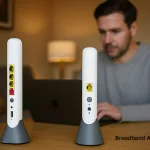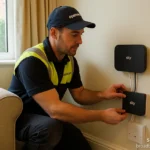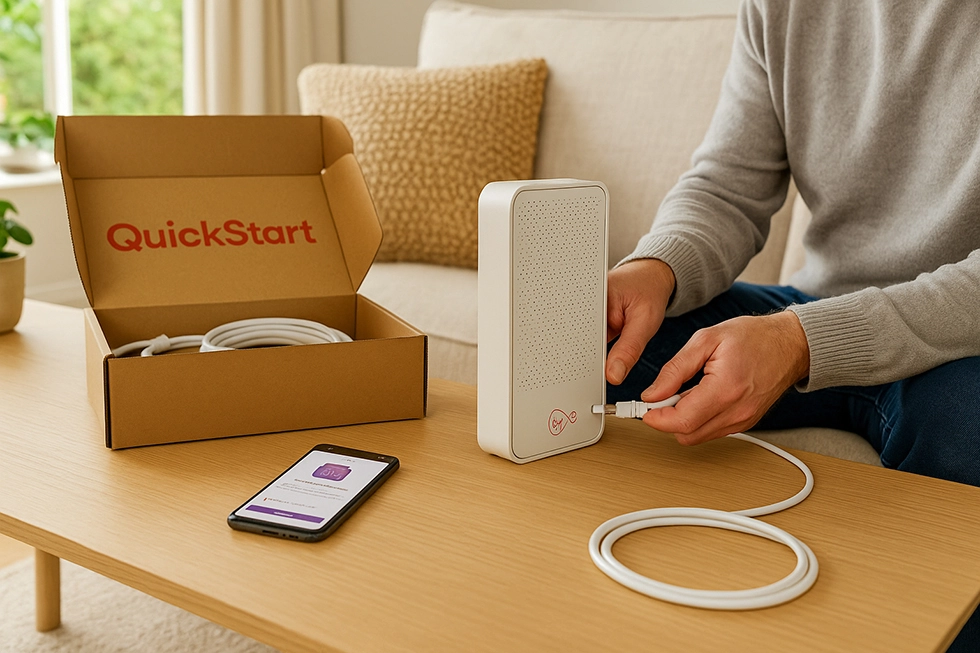A nationwide survey of 2,000 adults carried out in September 2025 has found that unreliable home internet is still a daily frustration for millions of people. More than half of those asked said they lose connection or suffer Wi-Fi drop-outs multiple times a month, underlining how disruptive broadband problems remain even as fibre coverage grows.

Internet issues affect daily life
The giffgaff report highlights the knock-on effects of patchy connections. People reported being cut off during online meetings, video streams dropping out, and online shopping orders failing to complete. When added up, the average person spends close to two days a year trying to sort out connectivity problems.
It isn’t just inconvenience at home. A large share of people admitted going out of their way to find a better signal—whether that’s working from cafés, logging in from libraries, or relying on friends and family for Wi-Fi access. A smaller group said they regularly switch to mobile data and tether their laptop to keep working.
Why poor Wi-Fi, not the line, is usually to blame
Many of the issues people describe as “broadband failures” are actually Wi-Fi related. Things like poor router placement, older hardware, thick walls, or interference from other devices can all cause slow or inconsistent speeds.
A good way to tell the difference is to run a wired speed test directly from the router. If the wired connection is fine but Wi-Fi devices keep buffering, the problem is almost certainly within the home network rather than the line itself.
Simple steps to improve Wi-Fi
Before thinking about switching provider, households can often fix things with a few changes:
- Place the router in an open, central spot rather than hiding it in a corner.
- Update the router software or replace outdated equipment.
- Use Ethernet cables for devices that stay in one place, like games consoles or TVs.
- Consider a mesh Wi-Fi system to extend coverage into difficult rooms.
These changes can remove many of the obstacles people face without needing an engineer visit.
What broadband providers now offer
Big broadband providers are increasingly offering Wi-Fi guarantees to tackle complaints.
- BT’s Complete Wi-Fi scheme supplies extra discs if coverage isn’t reaching every room, with a refund if it still doesn’t improve.
- Sky has launched WiFi Max with a similar promise and added features like device prioritisation.
- Virgin Media offers WiFi Max pods and a credit if customers can’t get 30Mbps in each room.
- Vodafone’s Pro packages include mesh boosters and a guarantee covering whole-home signal.
These add-ons mean households no longer need to put up with patchy coverage in larger or more awkward homes.
When to escalate a problem
If poor speeds continue even over a wired connection, the problem is more likely to be on the provider’s side. In that case, it’s worth contacting customer support, running official speed tests, and logging any outages. Providers can arrange line checks or book engineers. If a fault isn’t fixed within the timescales promised, customers may be eligible for compensation.
Switching is easier than many think
One of the standout findings of the survey is that a large group of people feel “stuck” with their provider, believing that switching is complicated or that others won’t be any better. That view is out of date.
Since Ofcom’s One Touch Switch system came in during 2024, customers only need to sign up with a new provider and the transfer is handled for them. Over a million households have already used the new system. For anyone unhappy with their broadband, moving is now a realistic option without the hassle of managing the switch themselves.
Giffgaff enters home broadband
The survey was commissioned by giffgaff, which many people know for its mobile network. Giffgaff has built a following by offering contract-free SIM-only deals using O2’s mobile network and letting customers manage everything online.
In 2025 it has taken a step into fixed broadband, launching full fibre packages over the nexfibre network. Plans are available at 200Mbps, 500Mbps and 900Mbps, all on rolling monthly contracts. The company says it shaped the product based on feedback from a trial group of users, aiming to offer flexibility and simplicity rather than long tie-ins.
Conclusion
Full fibre coverage continues to expand across the UK, with more households gaining access every quarter. Despite this, many people still struggle with everyday connectivity because of poor Wi-Fi setups or a lack of awareness about the support available.
With mesh systems, Wi-Fi guarantees, and easier switching rules, there are more ways than ever for households to sort out unreliable internet. The challenge now is for customers to take advantage of these tools rather than putting up with poor performance.










